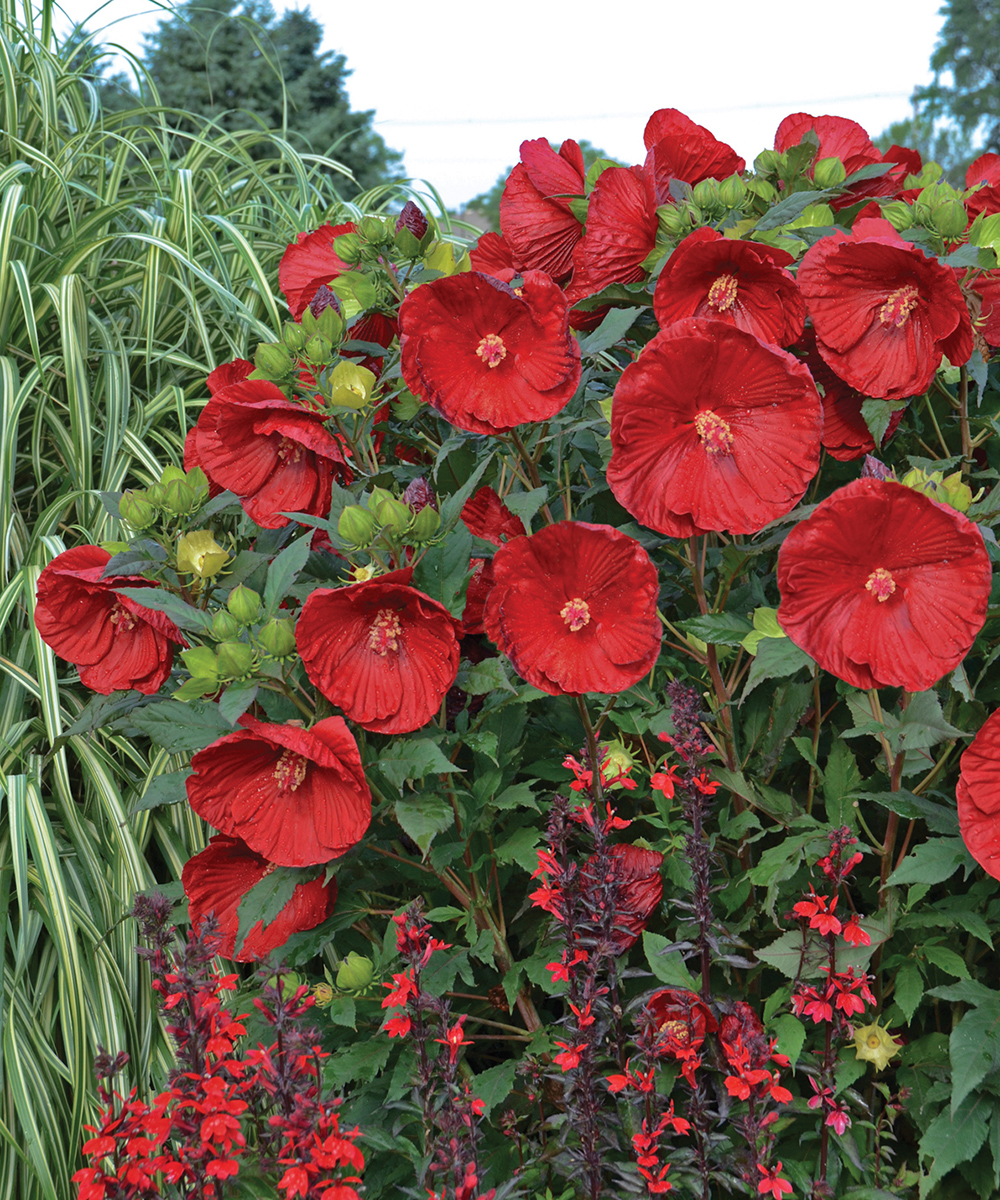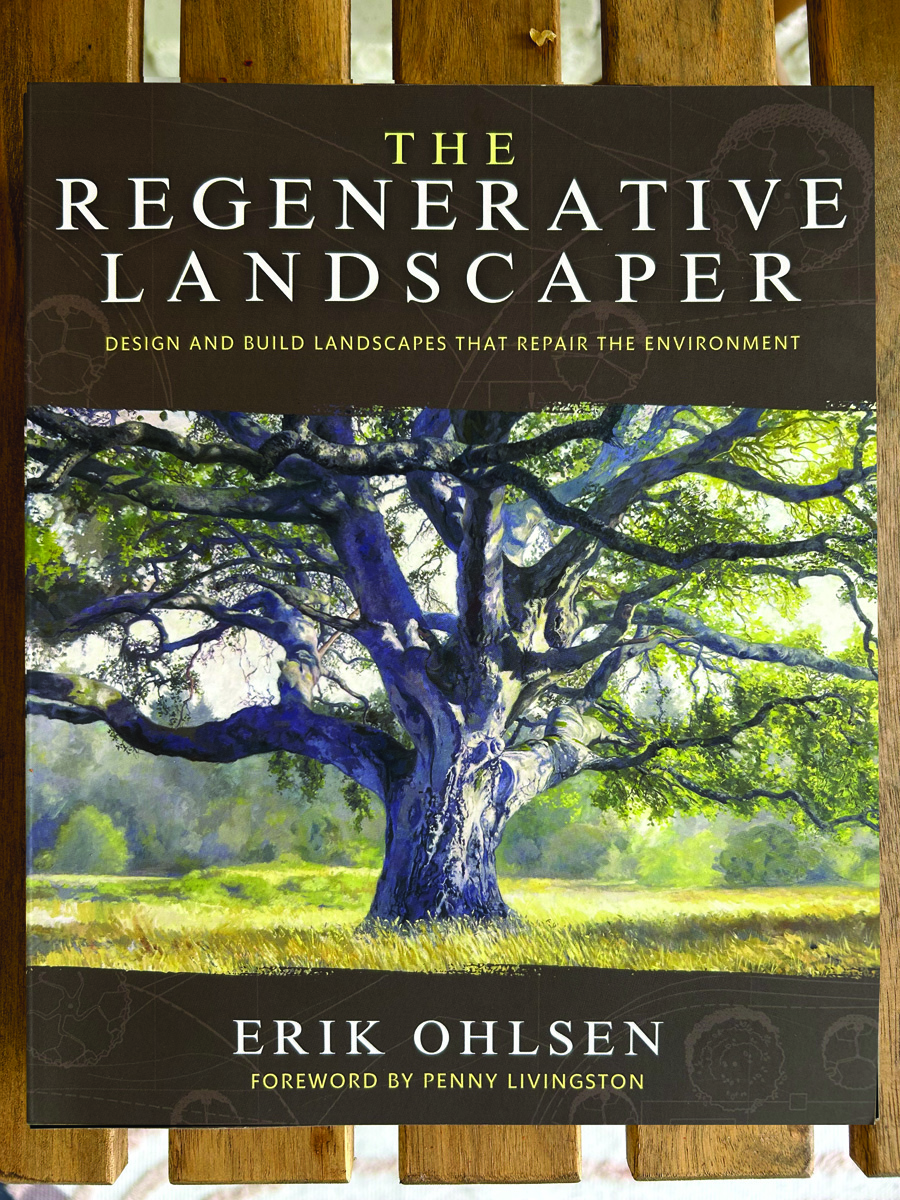
Every garden I design has a theme, even if it is just about color. A sequential color design is not created with the aim of one plant blooming after another, although that will naturally happen in any garden. Sequential color is about selecting a color and using plants with variations of the light and dark tones of that base color. Think of a paint swatch that you might get at a home improvement store and all the variations of color, from almost white to almost black, that you will see on it. While any color can be sequenced in this way, the easiest one to start with is red, which on the lightest end is a pale powder pink and at its darkest is a deep blackish merlot. The following plants are some great choices for creating a garden design around various shades of red.


Electric Lights™ Double Pink azalea
Rhododendron ‘UMNAZ 493’, Zones 4–7
The first color in the red spectrum is represented with the delightfully fragrant spring-blooming blossoms of Electric Lights™ Double Pink azalea. This exceptional shrub has buds that are hardy to –30°F. It grows best in full sun to partial shade, is not particular about soil, and needs average moisture. The upright shape of the 6-foot-tall and 4-foot-wide form makes it a perfect accent shrub. It also looks good grown en masse in the back of a border. Prune after the flowers have faded. A favorite of hummingbirds, the pale spring display is bookended with rich burgundy fall color.

‘Butterfly Kisses’ coneflower
Echinacea purpurea ‘Butterfly Kisses’, Zones 3–8
Moving forward in seasonal interest and color depth, ‘Butterfly Kisses’ coneflower is the perfect choice to create the next layer in our scheme. Bred in the Netherlands by Arie Blom, this perennial features fragrant summer-blooming medium-pink flowers. It has a compact form, reaching only 1 to 1½ feet tall and wide. This makes it perfect for smaller spaces, containers, and the front of a layered planting. The flowers provide late summer and fall color, and you can leave the seed heads up for winter interest during the dormant season. With its powder-puff double center, some say that this cultivar produces less pollen and nectar and fewer seeds for wildlife. Regardless, it makes a lovely addition to any garden.

‘Bloodstone’ sea thrift
Armeria maritima ‘Bloodstone’, Zones 3–8
Short in stature but not short on color, ‘Bloodstone’ sea thrift has bold, deep pink flowers that grow above a tidy, small evergreen mound of foliage. This plant does best in infertile, dry soil that would test the mettle of fussier plants. Recognizable by its slim, leafless flower stalks held above short, grassy foliage, this perennial will bloom vigorously from midspring until early summer if given the proper conditions. Good drainage is necessary. Use this plant along a rocky path, in a stone wall, or in a hellstrip. Deadhead to promote continuous flowering.

‘Cranberry Crush’ rose mallow
Hibiscus ‘Cranberry Crush’, Zones 4–9
For the true red of our sequential color scheme, ‘Cranberry Crush’ rose mallow is the perfect choice. Dark red flowers and glossy green leaves offer a bold contrast to the finer foliage of the smaller perennials featured here. Its upright form is compact for a rose mallow, maturing at 4 feet tall and wide. ‘Cranberry Crush’ blooms from late June until September in the Northern Plains. This perennial grows with a vigor that makes up for its late spring arrival. The enormous 7-inch-wide flowers add drama that is delivered by few other plants.

Baton Rouge™ dogwood
Cornus alba ‘Minbat’, Zones 3–8
As we venture into deeper red tones, Baton Rouge™ dogwood supplies us with bright, blood-red stems in winter and a dramatic display of reddish-purple foliage in fall. The green leaves during the rest of the season make a lovely background to the small, white, late-spring-blooming flowers. This shrub thrives in full sun to partial shade and adapts to various soil conditions, including pollution. The compact form grows only 4 feet tall and wide. To maintain a steady production of winter-red stems, annual pruning is necessary. Remove three-year-old wood at ground level to encourage new growth in late fall or winter.

‘Back in Black’ stonecrop
Sedum ‘Back in Black’, Zones 3–9
For the darkest color in the spectrum, I have selected ‘Back in Black’ stonecrop. This plant features very dark foliage and flowers and requires little care. The virtually black, purple foliage with creamy red blooms are enjoyable from spring through fall. ‘Black in Black’ grows 2 feet tall and 2½ feet wide and deserves a spot in any well-drained, sunny garden. It’s resistant to foraging by rabbits and attracts a variety of pollinators.
These selections provide color along a broad range of the red spectrum as well as interest from spring into winter. An ardent gardener could easily add more plants with other shades of red to create an even richer design. The possibilities are endless. What colors would you like to explore for your sequential color garden?
For more design ideas centered around color, check out:
—Marti Neely, FAPLD, owns and operates Marti Neely Design and Associates in Omaha, Nebraska.
Fine Gardening Recommended Products

Buffalo-Style Gardens: Create a Quirky, One-of-a-Kind Private Garden with Eye-Catching Designs
Fine Gardening receives a commission for items purchased through links on this site, including Amazon Associates and other affiliate advertising programs.

Berry & Bird Rabbiting Spade, Trenching Shovel
Fine Gardening receives a commission for items purchased through links on this site, including Amazon Associates and other affiliate advertising programs.

The Regenerative Landscaper: Design and Build Landscapes That Repair the Environment
Fine Gardening receives a commission for items purchased through links on this site, including Amazon Associates and other affiliate advertising programs.



















Comments
Log in or create an account to post a comment.
Sign up Log in